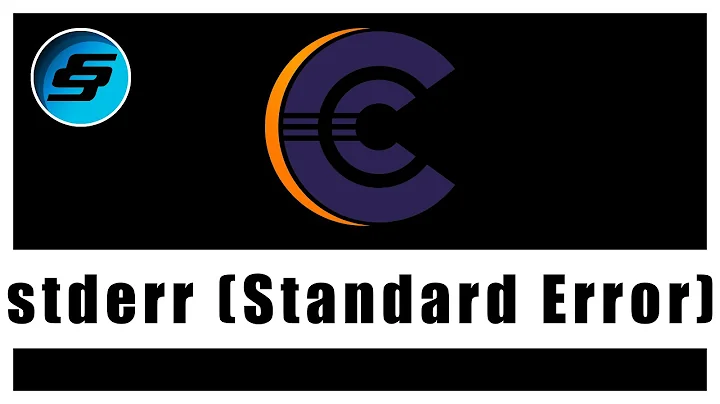Write to stderr
Solution 1
It appears that the program is re-writting the various write() functions to detect whether you are printing to file descriptor 2 and then adding the relevant escape codes to make the output red at the terminal.
Unfortunately, in shell, when you do something like
echo "foo" 1>&2
The function will still be calling write (or some other similar system call) on file descriptor 1. The output appears on fd 2 since file descriptor 1 has been dupped to file descriptor 2 by your shell.
Unfortunately, I don't know of way to write /directly/ to fd 2 in shell, but you can use awk. A function like this will write the arguments directly to file descriptor 2.
error() {
awk " BEGIN { print \"$@\" > \"/dev/fd/2\" }"
}
I believe this is a feature of GNU awk that isn't part of POSIX but it also works on the awk provided on OS X.
Solution 2
That software hooks the write() system calls that apprear to write at file descriptor 2, that is known as stderr.
It is a shared library (so recompilation of the kernel is not necessary). As descripted in the installation manual it takes use of the environment varaible LD_PRELOAD. The dynamic linker can be influenced into modifying its behavior during the program's execution. These variables adjust the runtime linking process by searching for shared libraries at alternate locations.
The executable /bin/bash itself does not honour such variables, so bash itself uses the original pallette of system calls, not the modified ones. The redirection you mentioned in your question happend in bash. Not in the executable of echo. If echo could wirte to the error descriptor by itself (not via bash) the output would be red.
Python can write to stderr. See the proof (that should appear in red):
python -c 'import os; os.write(2, "error")'
Solution 3
Create a helper function:
echoerr() { printf "\033[0;31m%s\n\033[0m" "$*" >&2; }
And use it anywhere:
echoerr "something went wrong here"
This combines writing to stderr (>&2) and changing colors (solution taken from here https://stackoverflow.com/questions/5947742/how-to-change-the-output-color-of-echo-in-linux).
Related videos on Youtube
pfnuesel
Updated on September 18, 2022Comments
-
 pfnuesel almost 2 years
pfnuesel almost 2 yearsI'm using stderred to color all output streamed to stderr red. It's working fine. But when I write my own bash script and throw an error with
echo 'error' 1>&2, it doesn't color the output in red. I reckon this is, because the command simply redirects the output to wherever the stderr file descriptor points to, but doesn't properly mark the message as belonging to stderr. Is that so? How can I properly write to stderr in bash?-
Erik Kaplun over 8 yearsfor the record, you can also do
>&2 echo erroraccording to this answer.
-
-
Rob C over 9 yearsSounds like
stderredis a nice idea implemented wrong. The approach I would have taken would be to create a newptsdevice and connect file descriptor2to that. Then a it could have a process read the data written to that file descriptor and rewrite it to the originalptswith escape codes included. Then it wouldn't have needed to useLD_PRELOAD, and1>&2would have worked. (My approach probably wouldn't have been entirely without problems either, but I think it would have worked better.) -
 Kusalananda about 6 yearsYou may want to test whether the standard error goes to a terminal before doing colour output.
Kusalananda about 6 yearsYou may want to test whether the standard error goes to a terminal before doing colour output. -
 VasyaNovikov about 6 years@Kusalananda TBH, I don't know how to do that, so I did not. Also, it's a function, so the real destination can change. Considering the question asked, not sure overall, could be just fine.
VasyaNovikov about 6 years@Kusalananda TBH, I don't know how to do that, so I did not. Also, it's a function, so the real destination can change. Considering the question asked, not sure overall, could be just fine. -
dotnetCarpenter over 2 years@Kusalananda Does the following check look good to you?
echoerr () { if [[ $(tty -s) -eq 0 ]]; then printf "\033[0;31m%s\n\033[0m" "$*" >&2; else printf "%s\n" "$*" >&2; fi } -
 VasyaNovikov over 2 years@dotnetCarpenter, if you want to test for
VasyaNovikov over 2 years@dotnetCarpenter, if you want to test fortty, then you should rather writeif tty -s; then ......otherwise sounds good. Printing colors might be useful even outside of a tty context though, such as to a log file to be later viewed withless -R -
 Kusalananda over 2 years@dotnetCarpenter
Kusalananda over 2 years@dotnetCarpenter[ -t 2 ] && printf ... >&2Seeman test. -
dotnetCarpenter over 2 years@VasyaNovikov good point about
less -Rand never seen an if statement withouttest,[]or[[]]. I didn't know that was allowed syntax :) -
dotnetCarpenter over 2 years@Kusalanada
-t FD file descriptor FD is opened on a terminal. I get that1=stdin,2=stdoutand3=stderrbut I have never seen that outside pipes - ala>&... Where is the documentation for that? Can I use 123 as a reference to those file descriptors anywhere outside arithmetic expansion? -
 Kusalananda about 2 years@dotnetCarpenter That's 0 for standard input and 1 and 2 for standard output and error. File descriptor 3 is the first descriptor available for other things (like duplicating one of the others or referring to a stream from or to a file etc.) You would use these numbers anywhere where the number that designates a file descriptor is expected. In the shell, that would mostly be in redirections, i.e., as in
Kusalananda about 2 years@dotnetCarpenter That's 0 for standard input and 1 and 2 for standard output and error. File descriptor 3 is the first descriptor available for other things (like duplicating one of the others or referring to a stream from or to a file etc.) You would use these numbers anywhere where the number that designates a file descriptor is expected. In the shell, that would mostly be in redirections, i.e., as in>&2, but also in the-ttest.




